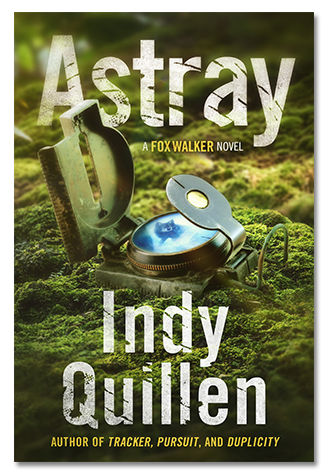Getting started with preparedness can look daunting – that’s a fact.
 I’ve talked about Why We Should Prepare – the fact that we need to be ready to deal with natural disasters and man-made disasters, including personal emergencies, such as loss of income due to illness or lack of employment.
I’ve talked about Why We Should Prepare – the fact that we need to be ready to deal with natural disasters and man-made disasters, including personal emergencies, such as loss of income due to illness or lack of employment.
I’ve had a preparedness mentality since my days of living in the country in the Midwest. But before we moved to the Pacific Northwest, we lived for years in a warm climate and in the city, where I became lax about being as prepared as I used to be. After being much too close to some major fast-moving wildfires, I decided to get back on board. But looking at the overall picture of where I wanted to be and where I currently was looked, at first, overwhelming to accomplish. I broke everything out into steps to make it easier and not ruin our monthly budget.
I discussed this issue in the 6 Excuses Why People Don’t Prepare. And I’ve talked in detail how to overcome Excuse #1 – Too Expensive. Setting a small budget and purchasing a few items every time you shop is a great way to get started.
Today, let’s tackle the #2 most used excuse – too much time and effort.
 If you’ve not taken the first step of creating a list of items you want on hand for preparedness, do that first. You can refer to the list below for non-food ideas. Then set a budget for yourself on how much you can spend a week or month to add these items as you shop. Picking up items while grocery shopping is one of the most efficient ways to add to your food storage. But other items you’ll want to have on hand can be found for a much better bargain in alternative stores. To save time and effort – have a list handy that you can refer to whenever you shop at one of the following places. If you don’t currently shop at any of these, I suggest you check them out.
If you’ve not taken the first step of creating a list of items you want on hand for preparedness, do that first. You can refer to the list below for non-food ideas. Then set a budget for yourself on how much you can spend a week or month to add these items as you shop. Picking up items while grocery shopping is one of the most efficient ways to add to your food storage. But other items you’ll want to have on hand can be found for a much better bargain in alternative stores. To save time and effort – have a list handy that you can refer to whenever you shop at one of the following places. If you don’t currently shop at any of these, I suggest you check them out.
•Once a month we stock up on bulk items such as laundry detergent, all paper products (such as toilet paper, paper towels and tissues), cases of canned vegetables and bottled water. Stores such as Costco and Sam’s Club are perfect places for these type of items. We save money purchasing in bulk vs. individual items and it’s only one trip, saving gasoline and time. Hint: Just don’t go looking around at luxury items – stick to your list!
•Once every 3-4 months I may make a trip to the Drug Store for items that I know are less expensive than at the grocery store such as, Toothpaste, Mouthwash, Epsom Salts, Hydrogen Peroxide and First Aid supplies. Some of these items are also at the Dollar Stores.
•Once every 6 months we purchase items at the Dollar Store or 99 Cent Store. This is great place for items like batteries, certain foods and paper products. I like picking up small packs of travel-sized items here for our travel kits and for camping.
That’s three or less quick shopping trips that you can schedule during a 6 month time span that will keep your supplies up to date and make it easy on your budget, as you won’t be getting everything on your list each time. Some items will last months before you have to replace them.
Get Started!
Here’s a list of items (beyond food) to consider keeping on hand:
Toilet Paper: We purchase this in bulk and keep back some rolls in storage for an emergency.
 Baking Soda: I use this ingredient for cooking, health & first aid care, laundry, and making my own cleaning supplies, as well as for dental care. I purchase a 13 lb bag at Costco for around $6 – which can last me for up to a year. I divide it into containers to keep it handy in the kitchen, bath and laundry room.
Baking Soda: I use this ingredient for cooking, health & first aid care, laundry, and making my own cleaning supplies, as well as for dental care. I purchase a 13 lb bag at Costco for around $6 – which can last me for up to a year. I divide it into containers to keep it handy in the kitchen, bath and laundry room.
White Distilled Vinegar: again, a much used product. Besides uses in the kitchen, I use it to clean bathrooms and showers. It’s also good for canning. It occasionally gets used in the laundry. I purchase a carton of two-gallon jugs at Costco for around $7 which easily lasts a year.
Epsom Salts, Hydrogen Peroxide and Rubbing Alcohol: These are first aid items I always have handy for home health care. The best prices are usually in the Drug Stores, although I always check at Costco as well.
First Aid Supplies: It’s smart to have lots of bandages, 3” sterile pads, self-sticking bandage rolls (they work better than first-aid tape), antiseptic cream and Betadine (the go-to antiseptic used in hospitals) on hand for emergencies. These items can take care of most injuries around the house, or help keep someone stable until you can get them to urgent care or the emergency room at a hospital. Of course for anything more serious, call 911.
Batteries: I keep a stock of various sizes on hand at all times. To find them easily I use a plastic container made especially for battery storage – and keep it in the refrigerator to extend battery life. I always know where they are.
Toothbrushes, toothpaste, shampoo, toiletries, feminine needs: It’s always great to know there’s more toothpaste waiting in the drawer when you’ve just squeezed out the last of the tube. And I like changing out toothbrushes often, especially after getting over a cold or the flu. Speaking of the flu, I always stock up in the Fall before the cold season hits and make sure I have plenty of medicine and immune system support products on hand. After the winter I re-stock. I keep our travel kits fully stocked at all times, which has come in handy more than once when we’ve unexpectedly run out of something.
I hope you can see that by keeping a stock of these items on hand it becomes easy to re-supply without much effort or expense whenever you shop. Pretty soon it will become just a part of your monthly routine.


 Being outside in nature is the most basic part of who I am. Besides gaining knowledge about wildlife, I learn lessons about who I am, and surprise myself about what I am capable of achieving. Nature continually inspires me. It is a part of all my writings, no matter the genre or subject matter.
Being outside in nature is the most basic part of who I am. Besides gaining knowledge about wildlife, I learn lessons about who I am, and surprise myself about what I am capable of achieving. Nature continually inspires me. It is a part of all my writings, no matter the genre or subject matter. 





Excellent info about easy, practical ways to get started. My husband and I used to keep emergency kits on hand, and then drifted away from maintaining them. I agree that it’s a very wise idea to get started again!
Thanks Ann! I agree, it’s so easy to let it slide. For me, it’s been a matter of developing good habits about keeping a look out for items while I am shopping anyway. And now I think about how I could reuse things I used to throw out. Just a different thought process – but it takes time to train ourselves to it. Thanks for taking the time to comment here – much appreciated! Good luck!